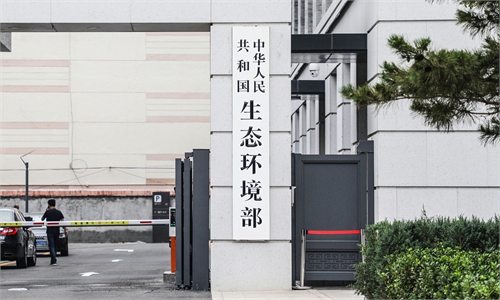
Visitors take photos among autumn leaves at a park in Changchun, northeast China's Jilin Province, Oct 19, 2023.(Photo: Xinhua)
China recorded its warmest October since 1961, as the National Climate Center (NCC) confirmed on Friday that average national temperature in October was 12.2 degrees Celsius, the highest level for the same period since 1961, 1.6 degrees higher than the normal level.
China recorded higher temperatures and lower rainfall in October, with 140 national meteorological stations reporting record-breaking daily maximum temperatures in October, according to Jia Xiaolong, deputy director of NCC at a press conference on Friday.
According to Jia, in most parts of China, temperatures in October were above average or close to the normal levels. The temperature in some northern regions, including the Inner Mongolia Autonomous Region, Xinjiang Uygur Autonomous Region, Tianjin Municipality and Liaoning Province were the highest for the same period since records began.
The national average precipitation in October was also below normal levels for the same period, but unlike temperature trends, there is a significant variation in the precipitation across different regions.
For example, North China's Hebei Province had the lowest precipitation in October since 1961, while Northwest China's Qinghai Province recorded the second highest precipitation level.
Chinese meteorologist Shi Yan attributed unusually high temperatures in areas including North and Northeast China to three factors, including a less frequent cold air, the presence of warm ridges and strong warm air movements in the North China Plain, and the recent scarcity of rainfall.
The China Meteorological Administration(CMA) said that the central and eastern regions of the country are entering a period of relatively high temperatures for the period following November 1. Many cities including Beijing, Tianjin, Taiyuan, Zhengzhou and Jinan may set the warmest temperature records for the month of November.
Recent heavy smog engulfing the Beijing-Tianjin-Hebei region was also affected by the weather. CMA said while temperatures were rising, areas like North China and the Yellow River-Huaihe regions were under the influence of stable weather conditions with low wind speeds and high humidity, which was unfavorable for the dispersion of pollutants and led to an increase in the development of fog and haze weather.
But the arrival of cold air will bring an end to both the warmth and fog and haze. The CMA said that from November 1 to 3 and from the 4 to the 6, there will be two cold air waves affecting China, with a wide-reaching impact and a significant cooling effect. Regions north of the Yangtze River will experience a general temperature drop of more than 10 degrees Celsius, and in some areas, the temperature may drop by around 15 degrees Celsius.
Global Times


